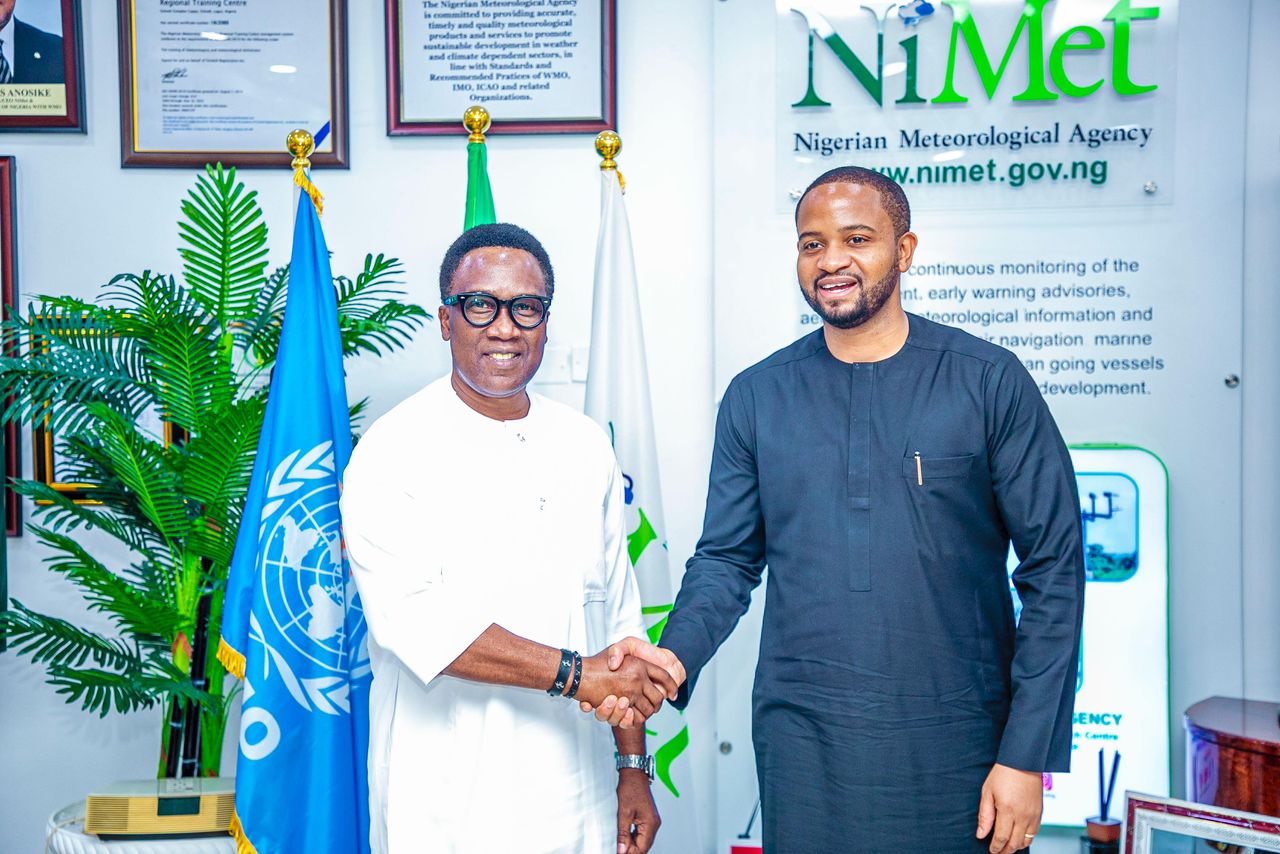In a bold step towards fostering climate-resilient infrastructure and sustainable regional development, the Managing Director of the South-East Development Commission (SEDC), Mr. Mark Okoye, has paid a strategic courtesy visit to the Director General and Chief Executive Officer of the Nigerian Meteorological Agency (NiMet), Professor Charles Anosike, at the Agency’s headquarters in Abuja.
The visit was more than a ceremonial exchange it was a crucial convergence of ideas and a prelude to what both parties described as “a shared mission for environmental stewardship and economic revitalization” in Nigeria’s South-East region.
Speaking during the engagement, Mr. Okoye underscored that the establishment of the South-East Development Commission by President Bola Ahmed Tinubu, was not only a constitutional responsibility but a national imperative designed to address decades-long challenges of ecological degradation, infrastructural decay, and economic dislocation in the region.
He highlighted the SEDC’s core mission to reconstruct and rehabilitate public assets, promote regional cohesion, and respond decisively to both environmental and developmental concerns peculiar to the South-East states.
According to him, “President Tinubu has demonstrated unwavering commitment to regional equity and sustainable development. The creation of SEDC is a testament to that vision. We are here today to deepen inter-agency collaboration and explore how weather and climate data can become a lever for real transformation, especially in the agricultural and infrastructural sectors of the South-East.”
Okoye expressed the Commission’s interest in integrating NiMet’s technical expertise into the design and implementation of its intervention projects. He emphasized the need to “de-risk” economic sectors through improved planning, backed by accurate meteorological data, while also building institutional and community resilience against climate-related vulnerabilities.
In his remarks, NiMet’s Director General, Professor Charles Anosike, welcomed the initiative and reaffirmed the Agency’s readiness to partner with SEDC in deploying science-driven solutions to address the South-East’s environmental concerns.
Anosike detailed NiMet’s long-standing role in supporting national and regional development efforts through timely climate information, early warning systems, and risk management advisory services. Drawing from previous partnerships with the North-East Development Commission (NEDC), he noted that NiMet is not new to inter-agency cooperation, especially in post-conflict and ecologically fragile regions.
He said: “We’ve worked with several development partners across Nigeria. Our goal has always been to provide actionable weather and climate data that informs decisions from agriculture to aviation, from flood control to urban planning. The South-East deserves no less.”
Professor Anosike further explained that NiMet has already identified key vulnerabilities in the region ranging from flash floods to soil erosion and irregular rainfall patterns, stating that the Agency’s forecasting capabilities and scientific products are essential tools for any serious development intervention.
He proposed that the down scaling of Seasonal Climate Predictions to local communities could be a game-changer in empowering smallholder farmers with the knowledge needed to adapt to climate variability, boost crop yields, and ensure food security one of the core goals of the current administration’s Food Systems Security Initiative.
One of the most significant outcomes of the high-level engagement was the mutual agreement to sign a Memorandum of Understanding (MoU) without delay. The MoU is expected to provide a formal framework for collaboration between the two federal institutions, opening up avenues for joint programs, technical support, and stakeholder sensitization campaigns.
The planned partnership also includes community-level climate awareness initiatives, capacity-building programs for local governments, and the development of early warning infrastructures across the region to protect livelihoods and public assets.
Both leaders acknowledged the importance of bridging the climate information gap in rural areas—where most farmers and residents are often unaware of impending weather risks—by increasing access to localized forecasts and advisories in local languages and culturally relevant formats.T
Observers believe the synergy between NiMet and SEDC could not have come at a better time. The South-East has over the years faced devastating ecological challenges, including gully erosion, seasonal flooding, and dwindling agricultural productivity—issues that require coordinated action backed by credible data and inclusive planning.
With Nigeria’s commitment to the United Nations Sustainable Development Goals (SDGs), especially Goal 13 on Climate Action and Goal 11 on Sustainable Cities and Communities, the partnership between NiMet and SEDC is seen as a progressive move toward localizing global targets for tangible regional impact.
In what could be described as the closing act of the meeting, Mr. Okoye and Prof. Anosike shook hands not just as heads of agencies, but as co-architects of a future where policy, science, and development intersect for the good of millions across the South-East.
As the ink dries on the planned MoU, stakeholders and citizens alike wait with optimism to see how this alliance will translate bold declarations into life-changing action.
